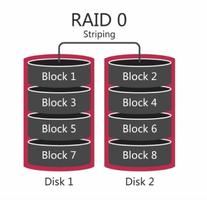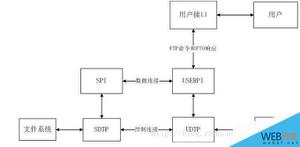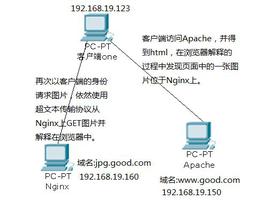允许在HAVING子句中使用别名的性能影响
今天早些时候我在这个问题上愚弄了自己。问题是使用SQL
Server,正确的答案涉及添加HAVING子句。我最初犯的错误是认为该SELECT语句中可以使用该语句中的别名HAVING,这在SQL
Server中是不允许的。我犯此错误是因为我假设SQL Server与MySQL具有相同的规则,该规则允许在HAVING子句中使用别名。
这让我感到好奇,然后我在Stack Overflow和其他地方四处闲逛,找到了大量材料来解释为什么在两个各自的RDBMS上强制执行这些 规则
。但是,我没有找到关于在子句中允许/禁止别名的 性能 含义的解释HAVING。
举一个具体的例子,我将重复上述问题中出现的查询:
SELECT students.camID, campus.camName, COUNT(students.stuID) as studentCountFROM students
JOIN campus
ON campus.camID = students.camID
GROUP BY students.camID, campus.camName
HAVING COUNT(students.stuID) > 3
ORDER BY studentCount
在HAVING子句中使用别名而不是重新指定COUNT?的性能含义是什么?这个问题可以在MySQL中直接回答,希望有人可以深入了解如果在HAVING子句中支持别名,那么在SQL中会发生什么。
在极少数情况下,可以同时使用MySQL和SQL Server标记SQL问题,因此请在阳光下享受这一刻。
回答:
仅仅专注于特定查询,并在下面加载示例数据。这确实解决了其他一些查询,例如count(distinct ...)其他人提到的查询。
这使用一个预先存在的表,其中大约有500万行是通过我的回答快速创建的,耗时3至5分钟。
结果结构:
CREATE TABLE `ratings` ( `id` int(11) NOT NULL AUTO_INCREMENT,
`thing` int(11) NOT NULL,
PRIMARY KEY (`id`)
) ENGINE=InnoDB AUTO_INCREMENT=5046214 DEFAULT CHARSET=utf8;
但是使用INNODB代替。由于范围保留插入而创建预期的INNODB间隙异常。只是说而已,没有区别。470万行。
修改表以接近Tim的假定架构。
rename table ratings to students; -- not exactly instanteous (a COPY)alter table students add column camId int; -- get it near Tim's schema
-- don't add the `camId` index yet
以下将花费一些时间。一次又一次地大块运行它,否则您的连接可能会超时。超时是由于update语句中有500万行没有LIMIT子句。注意,我们 确实
有一个LIMIT子句。
因此,我们将进行半百万次的行迭代。将列设置为1到20之间的随机数
update students set camId=floor(rand()*20+1) where camId is null limit 500000; -- well that took a while (no surprise)继续运行以上内容,直到no camId为null。
我跑了10次(整个过程需要7到10分钟)
select camId,count(*) from studentsgroup by camId order by 1 ;
1 235641
2 236060
3 236249
4 235736
5 236333
6 235540
7 235870
8 236815
9 235950
10 235594
11 236504
12 236483
13 235656
14 236264
15 236050
16 236176
17 236097
18 235239
19 235556
20 234779
select count(*) from students;
-- 4.7 Million rows
创建一个有用的索引(当然是在插入之后)。
create index `ix_stu_cam` on students(camId); -- takes 45 secondsANALYZE TABLE students; -- update the stats: http://dev.mysql.com/doc/refman/5.7/en/analyze-table.html
-- the above is fine, takes 1 second
创建校园表。
create table campus( camID int auto_increment primary key,
camName varchar(100) not null
);
insert campus(camName) values
('one'),('2'),('3'),('4'),('5'),
('6'),('7'),('8'),('9'),('ten'),
('etc'),('etc'),('etc'),('etc'),('etc'),
('etc'),('etc'),('etc'),('etc'),('twenty');
-- ok 20 of them
运行两个查询:
SELECT students.camID, campus.camName, COUNT(students.id) as studentCount FROM students
JOIN campus
ON campus.camID = students.camID
GROUP BY students.camID, campus.camName
HAVING COUNT(students.id) > 3
ORDER BY studentCount;
-- run it many many times, back to back, 5.50 seconds, 20 rows of output
和
SELECT students.camID, campus.camName, COUNT(students.id) as studentCount FROM students
JOIN campus
ON campus.camID = students.camID
GROUP BY students.camID, campus.camName
HAVING studentCount > 3
ORDER BY studentCount;
-- run it many many times, back to back, 5.50 seconds, 20 rows of output
所以时代是一样的。每跑十遍。
两者的EXPLAIN输出相同
+----+-------------+----------+------+---------------+------------+---------+----------------------+--------+---------------------------------+| id | select_type | table | type | possible_keys | key | key_len | ref | rows | Extra |
+----+-------------+----------+------+---------------+------------+---------+----------------------+--------+---------------------------------+
| 1 | SIMPLE | campus | ALL | PRIMARY | NULL | NULL | NULL | 20 | Using temporary; Using filesort |
| 1 | SIMPLE | students | ref | ix_stu_cam | ix_stu_cam | 5 | bigtest.campus.camID | 123766 | Using index |
+----+-------------+----------+------+---------------+------------+---------+----------------------+--------+---------------------------------+
使用AVG()函数,通过以下两个查询having(具有相同的EXPLAIN输出)中的别名,我的性能提高了约12%。
SELECT students.camID, campus.camName, avg(students.id) as studentAvg FROM students
JOIN campus
ON campus.camID = students.camID
GROUP BY students.camID, campus.camName
HAVING avg(students.id) > 2200000
ORDER BY students.camID;
-- avg time 7.5
explain
SELECT students.camID, campus.camName, avg(students.id) as studentAvg
FROM students
JOIN campus
ON campus.camID = students.camID
GROUP BY students.camID, campus.camName
HAVING studentAvg > 2200000
ORDER BY students.camID;
-- avg time 6.5
最后是DISTINCT:
SELECT students.camID, count(distinct students.id) as studentDistinct FROM students
JOIN campus
ON campus.camID = students.camID
GROUP BY students.camID
HAVING count(distinct students.id) > 1000000
ORDER BY students.camID; -- 10.6 10.84 12.1 11.49 10.1 9.97 10.27 11.53 9.84 9.98
-- 9.9
SELECT students.camID, count(distinct students.id) as studentDistinct
FROM students
JOIN campus
ON campus.camID = students.camID
GROUP BY students.camID
HAVING studentDistinct > 1000000
ORDER BY students.camID; -- 6.81 6.55 6.75 6.31 7.11 6.36 6.55
-- 6.45
具有相同输出的别名持续运行
EXPLAIN。见下文。因此,相同的Explain输出已显示两次,但并不能得出相同的性能,但这只是一般的提示。
+----+-------------+----------+-------+---------------+------------+---------+----------------------+--------+----------------------------------------------+| id | select_type | table | type | possible_keys | key | key_len | ref | rows | Extra |
+----+-------------+----------+-------+---------------+------------+---------+----------------------+--------+----------------------------------------------+
| 1 | SIMPLE | campus | index | PRIMARY | PRIMARY | 4 | NULL | 20 | Using index; Using temporary; Using filesort |
| 1 | SIMPLE | students | ref | ix_stu_cam | ix_stu_cam | 5 | bigtest.campus.camID | 123766 | Using index |
+----+-------------+----------+-------+---------------+------------+---------+----------------------+--------+----------------------------------------------+
以上是 允许在HAVING子句中使用别名的性能影响 的全部内容, 来源链接: utcz.com/qa/433046.html








